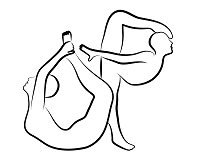 |
OpenPose
1.7.0
The first real-time multi-person system to jointly detect human body, hand, facial, and foot keypoints
|
 |
OpenPose
1.7.0
The first real-time multi-person system to jointly detect human body, hand, facial, and foot keypoints
|
In order to add a new module, these are the recommended steps in order to develop it:
experimental/ module, e.g., experimental/hair/.Worker. I.e., inherit from Worker and implement all the functionality on that class (copy the examples from any Worker subclass).W (e.g., WHairExtractor).examples/tutorial_api_cpp synchronous examples). While developing, templates provide more confusing debugging info. Turn the class into a template after being initially developed.pose/WPoseExtractor.Wrapper, use the experimental namespace for the new Struct (e.g., experimental::HairStruct) that the Wrapper will use. Do not change any function name from Wrapper, just add a new configure, with the new HairStruct or modify the existing ones without changing their names.examples/openpose/rthair.cpp) to test it.Worker into as many Workers as required.Datum, simply add into Datum the new variables required (without removing/modifying any previous variables!).After the code is running and ready to be merged, in order to officially release the new module:
Worker class to the non-template class (e.g., WHairExtractor to HairExtractor). WHairExtractor will simply wrap HairExtractor. This will reduce compiling time for the user. See examples from other modules.experimental/hair/ to hair/.experimental namespaces (e.g., from Wrapper and Hair) and turn Workers into template classes.examples/openpose/ and optionally add some tutorial examples in examples/tutorial_api_cpp.